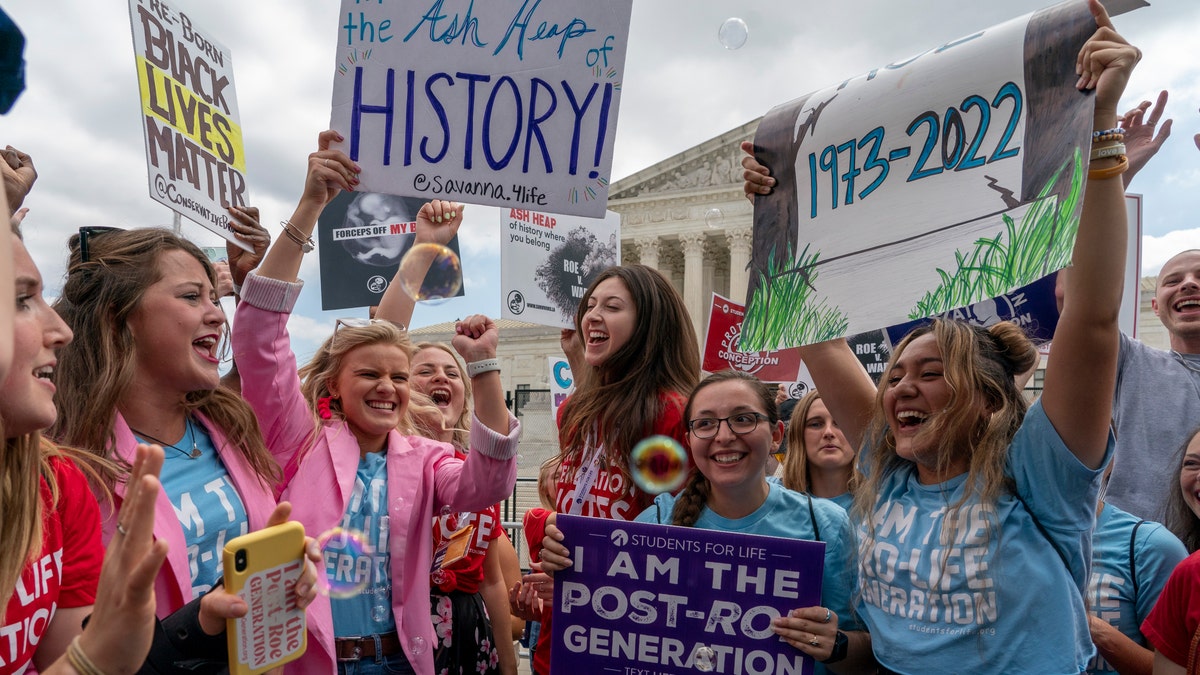A closer look at the Supreme Court’s 2023 term, from October 2023 to July 2024, provides a more nuanced picture than critics would have Americans believe, according to numbers crunched by veteran court watchers Adam Feldman and Jake Truscott of SCOTUS Blog.
Here’s a breakdown of how the justices — six conservatives and three liberals — have been voting during this time period.
Decision breakdown
In the 2023 term, the Supreme Court heard 62 cases, two of which were dismissed. Of the 60 cases decided, the court issued 27 unanimous decisions compared to 22 decisions with a 6-3 split. The recurring 6-3 split has often been viewed as a clear indicator of the court’s conservative leanings, but the reality is more complex, according to the SCOTUS Blog’s analysis findings.
BIDEN, HARRIS CALL FOR SUPREME COURT TERM LIMITS, CODE OF CONDUCT, LIMITS ON PRESIDENTIAL IMMUNITY
Half of the 6-3 decisions, 11 out of 22, broke down along the familiar conservative-liberal split. However, this term saw a notable increase in 6-3 decisions with mixed ideological coalitions. Unlike previous terms, where 6-3 splits often fell along predictable conservative-liberal lines, this term featured a more varied pattern.
Carrie Severino, a lawyer and author of “Justice on Trial: The Kavanaugh Confirmation and the Future of the Supreme Court,” noted in a Fox News Digital interview that, during this SCOTUS term, “about 40% of the decisions were unanimous.

Former President Trump faces a ruling over his immunity claim at the Supreme Court in Washington, D.C. (Getty Images)
“That’s not the type of pattern you’d expect if the court was some kind of hard right extremists,” she said. “First and foremost, looking at what the law in the Constitution requires and making decisions on that basis. And that sometimes means cases where the results, you could say, look conservative because maybe there’s conservative litigants on one side of the case or liberal litigants of the other, but that’s not what the court is or should be looking to.
“Now, that hasn’t stopped an unrelenting campaign of negative ads against the court, which is very damaging to the institution and, I think, is cynical and short-sighted,” she added. “But the fact of the matter is this is a court that’s incredibly principled.”
Since the conservative supermajority formed in 2020, this term had the most ideological splits compared to previous years, excluding landmark cases from 2021. This indicates that while the conservative bloc still wields significant influence, the ideological composition of 6-3 decisions has become less predictable.
Justice voting frequencies
Chief Justice John Roberts was most frequently in the majority this term at 96%, surpassing Justice Brett Kavanaugh, who was second at approximately 95%. Justice Amy Coney Barrett remained the third most frequent at 92%. On the liberal side, justices Elena Kagan, Sonia Sotomayor and Ketanji Brown Jackson were less frequently in the majority this term, with Kagan and Sotomayor tied at the lowest frequency of 71%.
TRUMP IMMUNITY CASE: SUPREME COURT RULES EX-PRESIDENTS HAVE SUBSTANTIAL PROTECTION FROM PROSECUTION

Pro-life women celebrate after the Supreme Court’s decision to overturn Roe v. Wade outside the Supreme Court in Washington June 24, 2022. (AP Photo/Gemunu Amarasinghe)
Notable 6-3 decisions
Several high-profile 6-3 decisions illustrate the ideological diversity of the SCOTUS:
- Trump v. United States: Addressed the prosecution of Trump over attempts to block the 2020 election results.
- Loper Bright Enterprises v. Raimondo and Relentless Inc. v. Dept. of Commerce: Focused on the power of federal agencies.
- City of Grants Pass, Ore. v. Gloria Johnson: Dealt with homeless encampments in public spaces.
- Securities and Exchange Commission v. Jarkesy: Concerned SEC tribunals.
- Garland v. Cargill: Involved a bump stock ban.
- Alexander v. South Carolina State Conference of the NAACP: Addressed voting maps.
LEONARD LEO WARNS BIDEN-HARRIS EFFORTS TO RADICALLY OVERHAUL SUPREME COURT COULD ‘BACKFIRE’

A protester outside the Supreme Court in Washington June 29, 2023. (AP Photo/Jose Luis Magana)
Meanwhile, attacks on the Supreme Court persist. This week, President Biden and Vice President Kamala Harris are calling on Congress to impose term limits and a code of conduct on the Supreme Court while also drafting limits on presidential immunity.
DOWNLOAD THE FOX NEWS APP HERE
Biden wants to impose a term limit of 18 years for justices. Once fully adopted, it would allow presidents to appoint new justices once every two years. Biden argued the new Supreme Court code of conduct should require justices to “disclose gifts, refrain from public political activity, and recuse themselves from cases in which they or their spouses have financial or other conflicts of interest.”
Fox News Digital’s Anders Hagstrom contributed to this report.
